This article was co-authored by Chris M. Matsko, MD. Dr. Chris M. Matsko is a retired physician based in Pittsburgh, Pennsylvania. With over 25 years of medical research experience, Dr. Matsko was awarded the Pittsburgh Cornell University Leadership Award for Excellence. He holds a BS in Nutritional Science from Cornell University and an MD from the Temple University School of Medicine in 2007. Dr. Matsko earned a Research Writing Certification from the American Medical Writers Association (AMWA) in 2016 and a Medical Writing & Editing Certification from the University of Chicago in 2017.
There are 7 references cited in this article, which can be found at the bottom of the page.
wikiHow marks an article as reader-approved once it receives enough positive feedback. In this case, 90% of readers who voted found the article helpful, earning it our reader-approved status.
This article has been viewed 640,082 times.
Stingrays are a flat-bodied cartilaginous fish with one or more barbed stingers located midway on the tail. They normally live in coastal tropical and subtropical marine waters, making it possible for them to come in contact with humans.[1] Although not usually aggressive, the stingray will use its stinger in self-defense when accidentally stepped on, secreting a venom into the victim's wound. Fortunately, you can follow a simple treatment paradigm if you find yourself in this situation.
Steps
Identifying the Severity of Symptoms
-
1Relax. Although alarming and quite painful, stingray wounds are rarely fatal.[2] In fact, most fatalities caused by stingrays are not due to venom intoxication but rather from internal organ injury (if stung in the chest or abdomen), excess blood loss, allergic reaction, or secondary infection. These complications can be managed by trained medical personnel if they occur.
-
2Identify your symptoms. Take a brief moment to identify what your symptoms are. Common symptoms include:[3]
- Pain
- Swelling
- Bleeding
- Weakness
- Headache
- Muscle cramps
- Nausea/Vomiting/Diarrhea
- Dizziness/Lightheadedness
- Palpitations
- Difficulty breathing
- Fainting
Advertisement -
3Prioritize the severity of your symptoms. Medically speaking, certain symptoms are more serious than others. Determine if you are developing an allergic reaction, suffering from excess blood loss, or experiencing venom intoxication. The presence of these symptoms should trigger seeking immediate medical attention.[4]
- Allergic reaction: Swelling of tongue, lips, head, neck, or other body parts; difficulty breathing, shortness of breath, or wheezing; red and/or itchy rash; fainting or loss of consciousness.
- Excess blood loss: Dizziness, fainting or loss of consciousness, sweating, elevated heart rate, decreased blood pressure, rapid breathing.
- Venom intoxication: Headache, dizziness, lightheadedness, palpitations, muscle cramps, seizures.
-
4Obtain appropriate medical care/supplies. Depending on the severity of your symptoms, obtain the medical care/supplies that is most appropriate for you. This may range from obtaining a first-aid kit, visiting the local medic unit, or calling 911 for an ambulance.
- Whenever in doubt, always choose a higher-level of care (i.e. calling 911).
Taking Care of the Wound
-
1Irrigate the wound with sea water. While still in the water, irrigate the wound with sea water, removing all debris and foreign bodies from the affected area. Use tweezers from a first-aid kit if necessary. Once the area is thoroughly irrigated and all foreign bodies are removed, come out from the water and dry the area off with a clean towel, taking care not to injure yourself further.[5]
- DO NOT remove any penetrating debris from neck, chest, or abdomen.
-
2Control any bleeding. Bleeding is common after a sting. As always, the best way to stop bleeding is by applying direct pressure at the source or slightly above the source with one finger for a few minutes.[6] The longer the pressure is held, the more likely the bleeding will subside.
- Try using hydrogen peroxide in conjunction with holding pressure to help stop bleeding if you cannot control it with direct pressure alone. Careful, hydrogen peroxide may sting!
-
3Soak the wound in hot water. You can combine this step with the previous step of applying direct pressure to control bleeding. Soaking the wound in hot water helps alleviate the pain by denaturing the venom protein complex. Optimal temperature is 45°C (113°F), but be certain not to cause any burns. Leave the wound soaking for 30 – 90 minutes, or until the pain has subsided.[7]
-
4Monitor the wound for signs of infection. Proper wound care includes keeping the area clean by applying soap and rinsing with water as well as keeping the wound dry at all times. Keep the wound uncovered and apply antibiotic ointment daily.[8] Avoid non-antibiotic creams, lotions, and ointments.
- Over the next several days, if the area becomes red, tender, itchy, sore, or begins to swell or develop a cloudy discharge, seek medical attention at the local urgent care center or emergency room. You may need antibiotics and/or drainage of an abscess.
Seeking Medical Treatment
-
1Obtain a first-aid kit. Depending on where you are, a first-aid kit should be easily accessible. Ask someone to grab it for you while you begin identifying your symptoms and treating your wound. Items found in the first-aid kit that will be most useful to you include:[9]
- Gauze
- Wound cleanser (hydrogen peroxide, alcohol wipe, soap)
- Tweezers
- Pain killer
- Antibiotic ointment
- Band-aid
-
2Locate nearest medic station, urgent care center, or emergency room. Having a healthcare provider evaluate and treat your wound(s) is not a bad idea. Not only will you be treated by an experienced professional, you will also reduce your chances of infection and other complications. A treatment plan with instructions and recommendations will be provided to you based on the provider's assessment.
- If the closest facility requires at least a 10 minute drive, you should first obtain a first-aid kit and control any bleeding before transporting.
-
3Call 911. This is your safety net. Call 911 in any of the following situations:
- Penetrating wound to head, neck, chest, or abdomen.
- No access to a first-aid kit or medic station.
- Symptoms of allergic reaction, excess blood loss, or venom intoxication.
- History of prior medical conditions and/or medication use that may influence the wound treatment.
- When in doubt, confused, inebriated, obtunded, insecure, scared, or anything else you can think of.
Expert Q&A
Did you know you can get expert answers for this article?
Unlock expert answers by supporting wikiHow
-
QuestionI got stung in my hand and went to hospital, but it's been over a week and it still is swollen and itchy. What can I do?
 Chris M. Matsko, MDDr. Chris M. Matsko is a retired physician based in Pittsburgh, Pennsylvania. With over 25 years of medical research experience, Dr. Matsko was awarded the Pittsburgh Cornell University Leadership Award for Excellence. He holds a BS in Nutritional Science from Cornell University and an MD from the Temple University School of Medicine in 2007. Dr. Matsko earned a Research Writing Certification from the American Medical Writers Association (AMWA) in 2016 and a Medical Writing & Editing Certification from the University of Chicago in 2017.
Chris M. Matsko, MDDr. Chris M. Matsko is a retired physician based in Pittsburgh, Pennsylvania. With over 25 years of medical research experience, Dr. Matsko was awarded the Pittsburgh Cornell University Leadership Award for Excellence. He holds a BS in Nutritional Science from Cornell University and an MD from the Temple University School of Medicine in 2007. Dr. Matsko earned a Research Writing Certification from the American Medical Writers Association (AMWA) in 2016 and a Medical Writing & Editing Certification from the University of Chicago in 2017.
Family Medicine Physician
Warnings
- Individuals with compromised immune systems such as diabetics or those with HIV/AIDS should pursue immediate and aggressive medical treatment.⧼thumbs_response⧽
- If in doubt, seek nearby medical attention or call 911.⧼thumbs_response⧽
- Call 911 or report to the nearest emergency room immediately if you feel any of the following:
- Chest tightness
- Facial, lip, or mouth swelling
- Difficulty breathing
- Hives or diffuse skin rash
- Nausea/vomiting
⧼thumbs_response⧽
References
- ↑ http://animals.nationalgeographic.com/animals/fish/stingray/
- ↑ https://bcachemistry.wordpress.com/tag/stingray-venom/
- ↑ http://www.medicinenet.com/script/main/art.asp?articlekey=63911
- ↑ https://www.emergencyphysicians.org/article/know-when-to-go/jellyfish-and-stingray-stings
- ↑ https://www.emergencyphysicians.org/article/know-when-to-go/jellyfish-and-stingray-stings
- ↑ https://www.goodrx.com/health-topic/injuries/how-to-treat-a-stingray-sting
- ↑ http://www.nlm.nih.gov/medlineplus/ency/article/002853.htm
- ↑ https://www.goodrx.com/health-topic/injuries/how-to-treat-a-stingray-sting
- ↑ http://www.redcross.org/prepare/location/home-family/get-kit/anatomy
About This Article
To treat a stingray sting, call emergency services immediately if the sting was to your head, neck, chest or abdomen. You’ll also want to seek immediate medical help if you have swelling of the tongue or other body parts, difficulty breathing, palpitations, seizures, or excessive blood loss. Otherwise, irrigate the wound with sea water and remove any debris and foreign bodies from the affected area. Once clean, control the bleeding with direct pressure for a few minutes, then immerse the wound in hot water for an hour to help alleviate the pain. For more tips from our Medical co-author, including how to monitor the wound for signs of infection, keep reading!

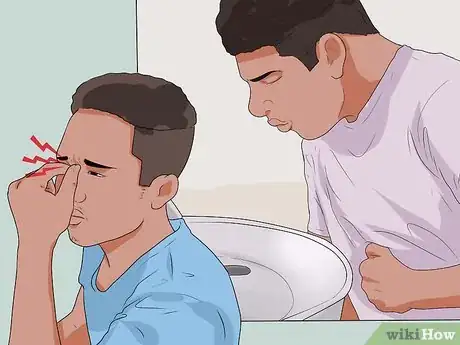
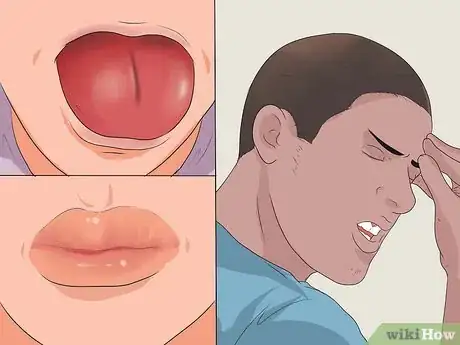
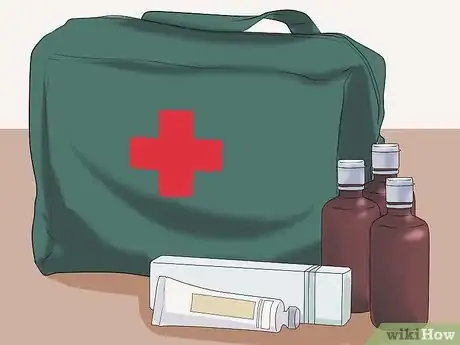
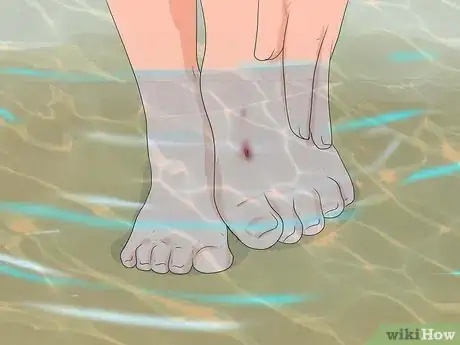
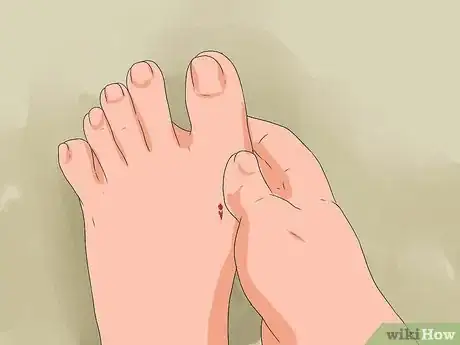
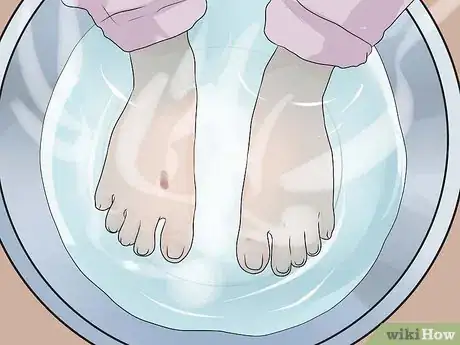
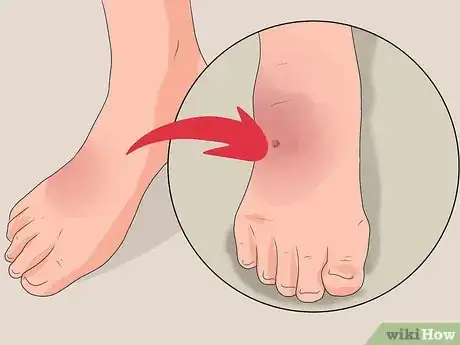
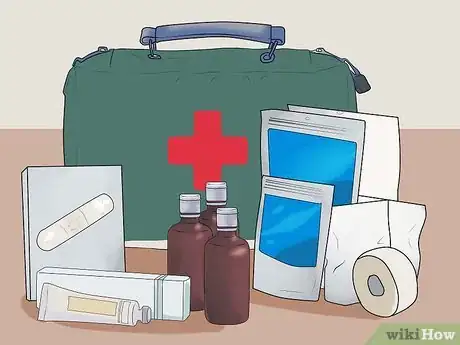
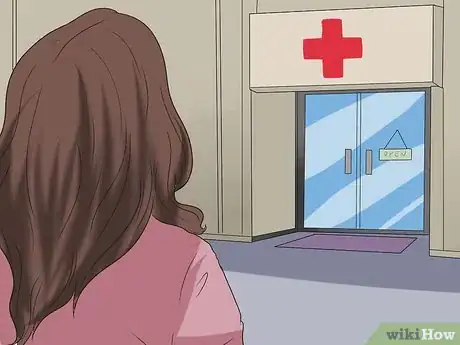
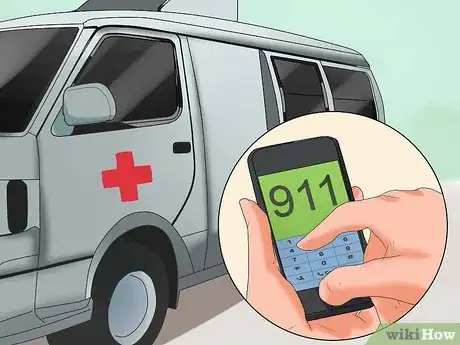
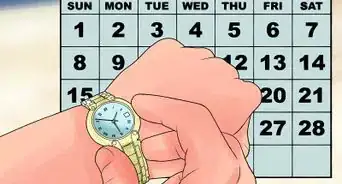
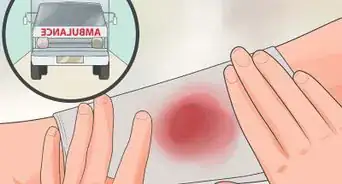






















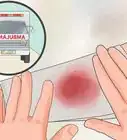





































Medical Disclaimer
The content of this article is not intended to be a substitute for professional medical advice, examination, diagnosis, or treatment. You should always contact your doctor or other qualified healthcare professional before starting, changing, or stopping any kind of health treatment.
Read More...